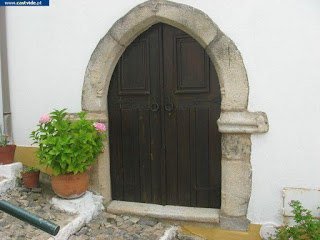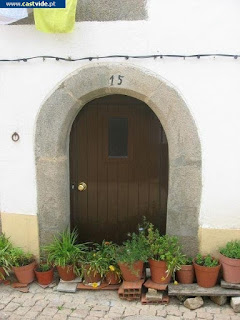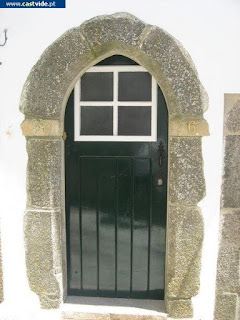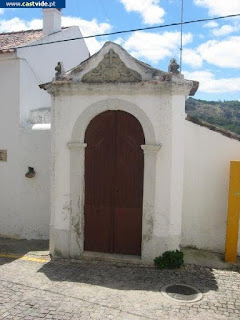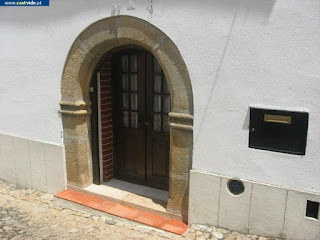- - - - - - - - - - - - - - - - - - - - - - - - - - - - - - - - - - - - - - - - - - - - - - -
MEDIEVAL
14th and 15th centuries
Castelo de Vide presents one of the most important and interesting sets of ogival doors currently in the country. Dating from the 14th and 15th centuries, its total number is sixty-three. These doors are in many of the streets, mainly in the oldest part of the Historic Center, with great agglomeration in the Judiaria and Rua de Santa Maria de Cima.
If some are simple ogival doors, without any decoration, many are decorated both at the level of the warheads, as the imposts and shoulders.
As decorative elements are used spheres, logs and flutes, together with sharp edges and plant motifs. The fish appears in a single door of the century. XVI (New Street), but there are also stylizations of the Sun and the stars (Penedo).
14th and 15th centuries
Castelo de Vide presents one of the most important and interesting sets of ogival doors currently in the country. Dating from the 14th and 15th centuries, its total number is sixty-three. These doors are in many of the streets, mainly in the oldest part of the Historic Center, with great agglomeration in the Judiaria and Rua de Santa Maria de Cima.
If some are simple ogival doors, without any decoration, many are decorated both at the level of the warheads, as the imposts and shoulders.
As decorative elements are used spheres, logs and flutes, together with sharp edges and plant motifs. The fish appears in a single door of the century. XVI (New Street), but there are also stylizations of the Sun and the stars (Penedo).
MEDIEVAL
Séc.s XIV e XV
Castelo de Vide apresenta um dos mais importantes e interessantes conjuntos de portas ogivais actualmente existentes no País. Datando dos séc.s XIV e XV o seu número total é de sessenta e três. Essas portas encontram-se em muitas das ruas, principalmente na parte mais antiga do Centro Histórico, com grande aglomeração na Judiaria e Rua de Santa Maria de Cima.
Se algumas são simples portas ogivais, sem qualquer decoração, muitas apresentam-se decoradas tanto ao nível das ogivas, como das impostas e ombreiras.
Como elementos decorativos são empregues as esferas, toros e caneluras, conjuntamente com arestas vivas e motivos vegetais. O peixe aparece numa única porta do séc. XVI (Rua Nova), mas também há estilizações do Sol e das estrelas (Penedo).












